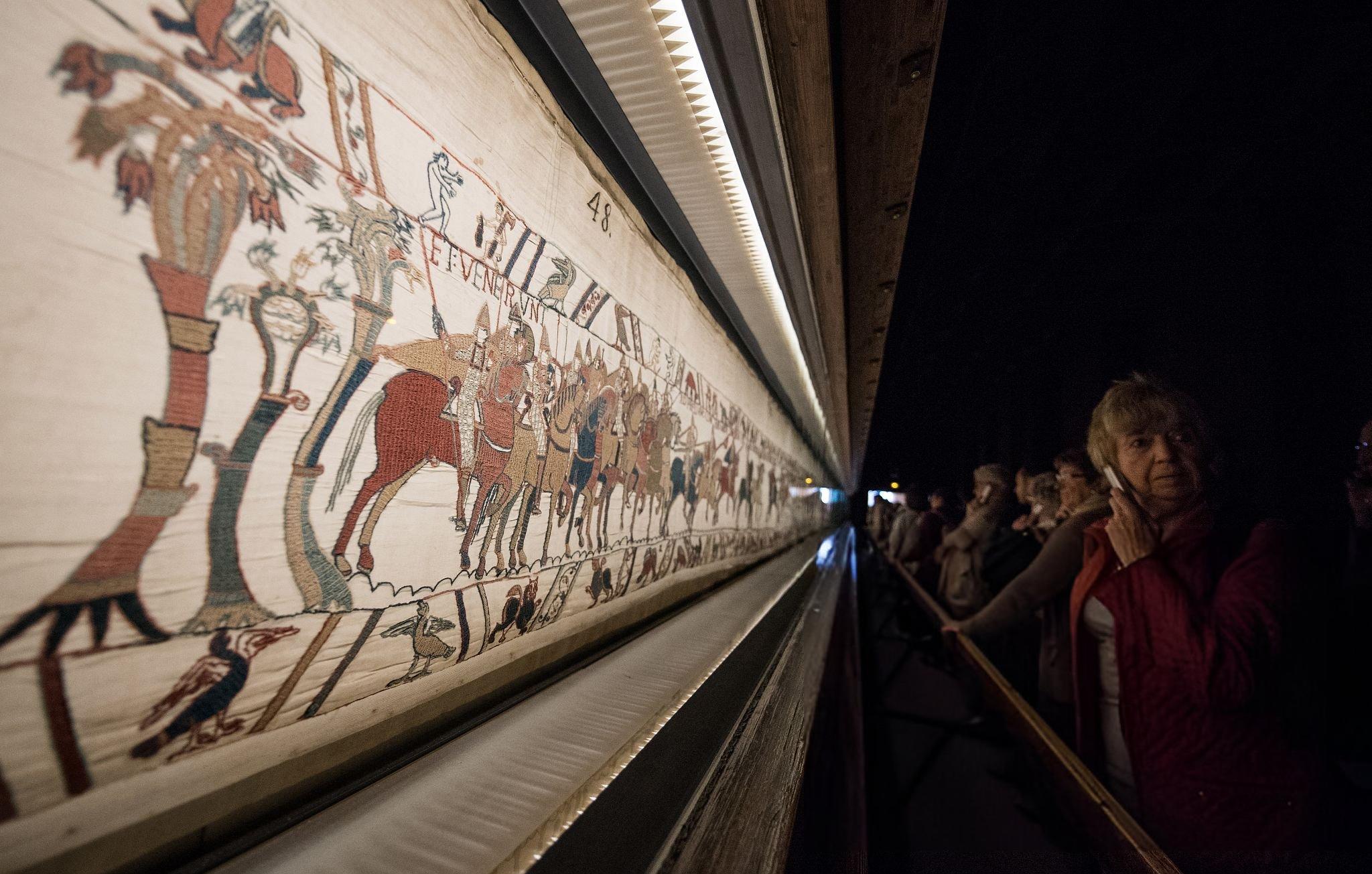A proposal to loan France’s treasured Bayeux Tapestry to the British Museum has ignited a fierce public controversy. While officials on both sides of the Channel insist the move can be done safely, a significant segment of the French public is expressing alarm.
They fear that transporting the nearly 1,000-year-old textile could cause irreparable harm, placing a diplomatic gesture in direct conflict with the preservation of a priceless historical artefact.
Public opposition to the loan has surged rapidly, with a Change.org petition started by art historian Didier Rykner gathering more than 64,000 signatures. The appeal urges President Emmanuel Macron to halt the plan, arguing that the fragile embroidery is too vulnerable for a long journey.
Supporters of the petition highlight existing tears and holes in the fabric, as well as its sensitivity to vibrations, contending that the historic work should not be risked for political purposes.
Also Read: Ochü Millet Festival sparks revival of Chünyi and farming
Critics further claim the decision was made without adequate consultation from conservation specialists, viewing it as a move driven by politics rather than curatorial best practices. The central argument is that the 70-metre embroidery is a unique and irreplaceable piece of cultural heritage. They believe that adding long-distance travel to its already delicate condition introduces an unacceptable level of risk and could compound its vulnerabilities.
Officials have presented a different perspective, emphasising careful planning and collaboration. Philippe Bélaval, an envoy appointed by the Élysée for the loan, points to a 2025 study that provides detailed recommendations for the tapestry’s handling and transport. While the study does not label the work as “untransportable,” the precise methods and route for its journey are still being finalised.
The Bayeux Museum has developed engineering solutions for its careful horizontal movement and has run tests with a full-scale replica to refine its packing procedures. The British Museum has affirmed that its conservation and collections teams possess extensive experience with delicate textiles and are working closely with their French colleagues.
The loan is part of a broader cultural exchange, timed to coincide with the Bayeux Museum’s closure for redevelopment starting on 1 September 2025. This arrangement also includes reciprocal loans, with items from Sutton Hoo and the Lewis Chessmen travelling to museums in Normandy, framed by leaders as a symbol of shared history.
Also Read: Alison Balsom to bid farewell at Last Night of the Proms 2025
Despite official assurances, key details surrounding the tapestry’s journey remain undecided. The method of transport, the route, and the exact conditions for its display, including vibration mitigation and climate control, have not been disclosed.
The final exhibition dates in London are dependent on conservation milestones achieved during the Bayeux Museum’s renovation, which is expected to conclude in 2027.
While the momentum of the public petition may influence political calculations, recent heritage debates in France suggest that such citizen campaigns do not always succeed in overturning state-led cultural initiatives.




